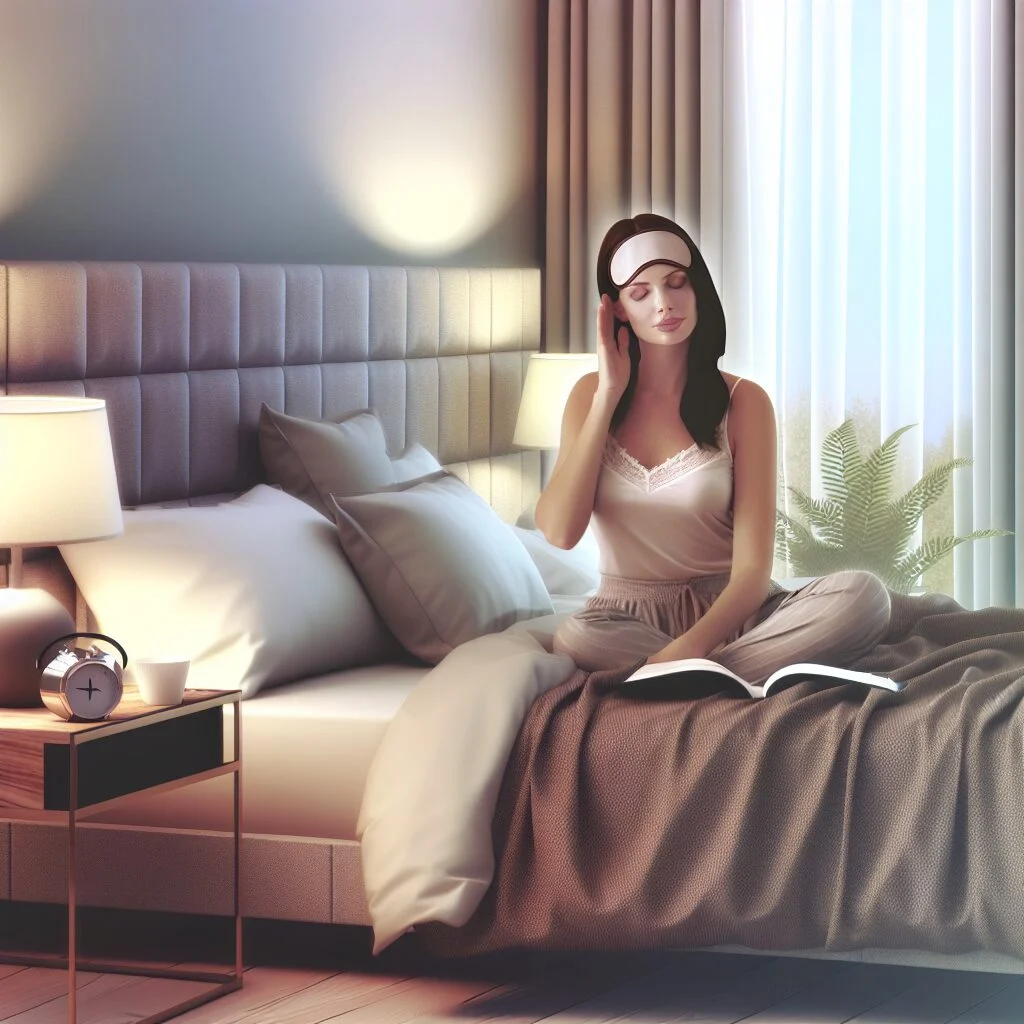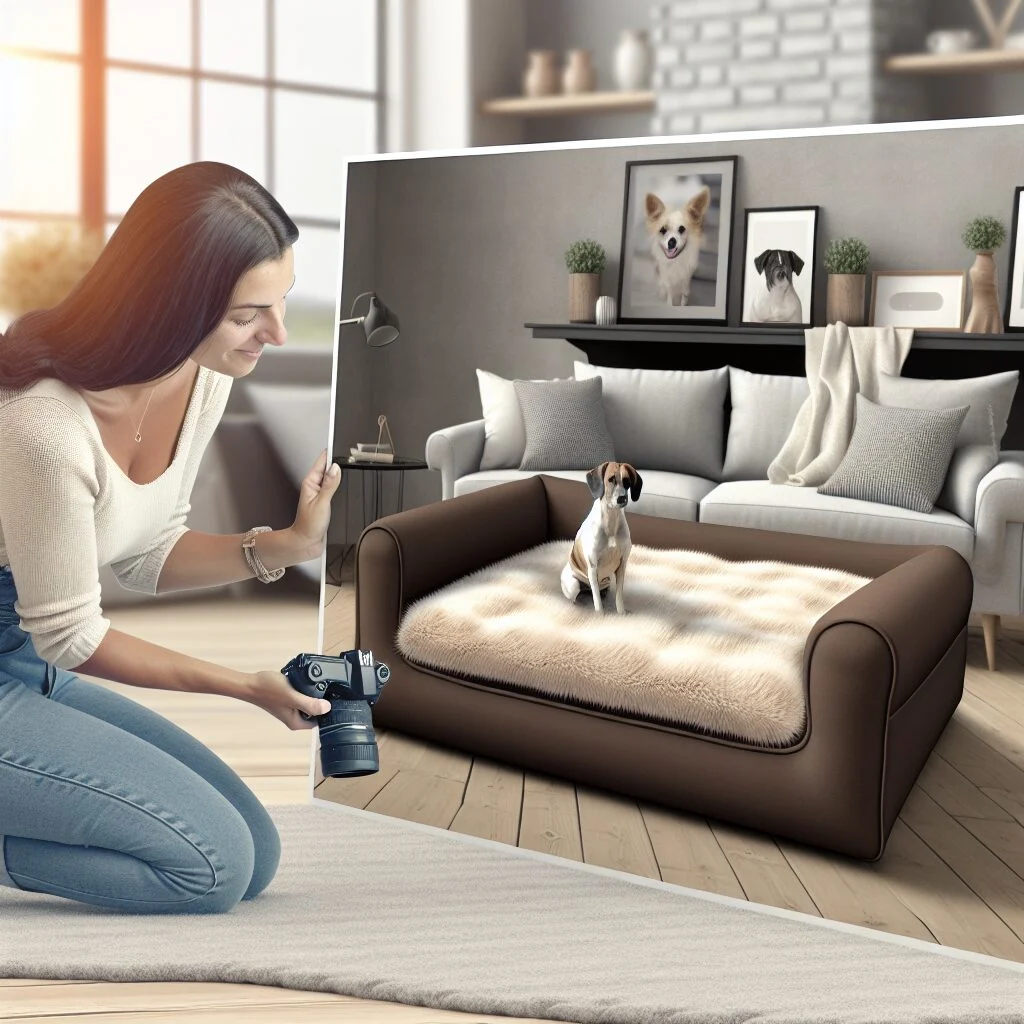The Ultimate Guide to Creating a Calming Bed Environment for Better Sleep
In our fast-paced, stress-filled world, the sanctuary of a truly calming bed has never been more essential. Sleep quality directly impacts our mental clarity, emotional regulation, physical health, and overall well-being. Yet millions struggle nightly with racing thoughts, discomfort, and environments that work against rather than for restful slumber. This comprehensive guide explores everything you need to know about creating the ultimate calming bed experience—from selecting the right mattress and bedding to establishing pre-sleep routines that signal your brain it’s time to wind down. Whether you’re battling chronic insomnia or simply looking to upgrade your sleep experience, these evidence-based strategies and product recommendations will transform your bed into the restorative haven your body and mind deserve.
Understanding the Science of Sleep and Comfort
Before diving into product recommendations, it’s crucial to understand what makes a bed truly “calming” from a physiological perspective. Quality sleep isn’t just about comfort—it’s about creating conditions that support your body’s natural sleep cycles and nervous system regulation. Our bodies are remarkably sensitive to subtle environmental factors that either promote or disrupt sleep.
The ideal sleeping environment supports what sleep scientists call “sleep hygiene”—conditions that signal your nervous system it’s safe to relax deeply. Temperature regulation is paramount; research consistently shows most people sleep best in environments between 60-67°F (15-19°C). Your body naturally drops in temperature to initiate sleep, and a cool room supports this process. Meanwhile, materials that wick moisture away prevent the discomfort of night sweats that can wake you.
Equally important is stimulus control. Your brain forms powerful associations between your bed and the activities performed there. A truly calming bed becomes a conditioned stimulus for sleep when used exclusively for sleep and intimacy—not work, scrolling, or binge-watching. This psychological principle explains why sleep experts recommend leaving the bed if you can’t fall asleep within 20 minutes, then returning only when sleepy. This preserves the bed’s powerful sleep-inducing association.
Selecting the Perfect Mattress for Your Sleep Style
The foundation of any calming bed environment begins with selecting the right mattress. This isn’t merely about comfort—it’s about proper spinal alignment, pressure point relief, and temperature regulation that supports your unique sleep style. Side sleepers, back sleepers, and stomach sleepers all require different levels of support.
For side sleepers, who comprise about 70% of the population, a medium-soft to medium mattress offering adequate give around shoulders and hips prevents painful pressure points. Memory foam and hybrid mattresses often provide the cushioning needed for side sleeping comfort. Back sleepers benefit from medium-firm support that maintains the natural curve of the spine without allowing the hips to sink too deeply. Stomach sleepers—though this position is generally discouraged by sleep experts—need firm support to prevent excessive arching of the lower back.
Beyond support level, consider materials carefully. Traditional memory foam, while contouring, tends to retain heat. Newer cooling technologies like gel-infused foam, phase-change materials, and open-cell construction offer the benefits of memory foam without the heat retention. Natural materials like latex provide excellent support with the added benefits of being hypoallergenic, dust mite resistant, and more environmentally sustainable.
Investing in a mattress with motion isolation properties is essential for couples, as partner movement is one of the most common sleep disruptors. Hybrid mattresses that combine individually wrapped coils with foam layers often provide the best balance of support, comfort, and motion isolation. For those concerned about sustainability, look for certifications like GOTS (Global Organic Textile Standard), GOLS (Global Organic Latex Standard), or CertiPUR-US that verify materials meet strict environmental and health standards.
Transformative Bedding for Ultimate Comfort
Creating a truly calming bed experience extends well beyond the mattress to the layers of bedding that cocoon you through the night. These elements not only affect comfort but also regulate temperature and manage moisture—two critical factors in uninterrupted sleep.
Start with high-quality sheets that balance breathability with softness. While thread count has traditionally been used as a quality indicator, it’s actually the fiber type and weave that most determine comfort. Long-staple cotton (like Egyptian or Pima) creates smoother, more durable sheets that grow softer with washing. Percale weaves offer crisp breathability ideal for warmer sleepers, while sateen provides a silkier feel preferred by those who run cool. For year-round comfort regardless of season, bamboo lyocell sheets offer exceptional temperature regulation, wicking moisture and adjusting to body temperature naturally.
The humble pillow, often an afterthought, actually plays a crucial role in spinal alignment and sleep quality. Like mattresses, pillow selection should match your primary sleep position. Side sleepers need thicker, firmer pillows that fill the space between shoulder and ear; back sleepers benefit from medium loft with good neck support; stomach sleepers require minimal loft to prevent neck strain. Consider adjustable pillows filled with shredded memory foam or buckwheat hulls that allow you to customize the height and firmness.
Completing your bedding ensemble, select duvets and blankets that can be easily adjusted throughout the night. The ideal weight of covers actually stimulates the production of serotonin and melatonin—hormones that promote relaxation and sleep. This explains the growing popularity of weighted blankets, which typically weigh between 5-30 pounds and create gentle, distributed pressure that many find deeply calming. For duvet inserts, look for those with baffle-box construction that prevents fill from shifting and creating cold spots.
Creating a Sleep-Promoting Environment: Beyond the Bed
While the bed itself forms the centerpiece of your sleep sanctuary, the surrounding environment plays an equally vital role in promoting deep, restorative sleep. Creating an optimal sleep environment involves careful attention to light, sound, air quality, and even scent—all of which directly influence your brain’s preparation for sleep.
Light exposure is perhaps the most significant environmental factor affecting sleep quality, as it directly regulates your circadian rhythm. Blue light from electronic devices is particularly disruptive, suppressing melatonin production and delaying sleep onset. Implement a digital sunset at least one hour before bed, switching off electronics and dimming household lights. Blackout curtains or shades prevent street lights and early morning sun from disrupting sleep cycles, while warm-toned nightlights with motion sensors provide just enough illumination for nighttime bathroom visits without triggering wakefulness.
Sound management creates the acoustic landscape for sleep. While complete silence works best for some, others find that consistent background sounds—known as “pink noise” or “brown noise”—mask disruptive environmental noises and promote deeper sleep stages. Sound machines offering these frequencies have been shown in sleep lab studies to improve sleep quality and morning cognitive function. For urban dwellers, soundproofing solutions like acoustic panels, door sweeps, and window inserts can dramatically reduce noise pollution from streets and neighbors.
Air quality affects breathing ease and allergy symptoms that might otherwise disturb sleep. High-quality air purifiers with HEPA filtration remove particulates, pollen, and irritants. Maintaining optimal humidity between 30-50% prevents the respiratory discomfort of air that’s too dry or too moist. For many, essential oil diffusers providing lavender, chamomile, or cedarwood scents create an additional sensory dimension that signals the brain it’s time for rest. Studies show these specific scents can lower heart rate and blood pressure, preparing the body physiologically for sleep.
Pre-Bed Routines: Setting the Stage for Perfect Sleep
The most carefully curated calming bed won’t deliver its full benefits without proper preparation of the mind and body for sleep. Establishing consistent pre-sleep routines signals your nervous system to begin the transition from wakefulness to rest, effectively priming your brain for deeper, more restorative sleep cycles.
Begin your wind-down routine 60-90 minutes before your target sleep time. This period should involve a gradual decrease in stimulation and increase in relaxation-promoting activities. A warm bath or shower 1-2 hours before bed initially raises body temperature, but the subsequent cooling mimics the natural temperature drop that triggers sleepiness. Adding Epsom salts (magnesium sulfate) to bath water may further promote muscle relaxation and sleep readiness.
Mindful tea rituals offer both physiological and psychological benefits. Herbal teas containing chamomile, valerian root, passionflower, or lemon balm have mild sedative properties that support the transition to sleep. The ritual itself—the warmth of the cup, the aromatic steam, the act of slow sipping—creates a moment of mindfulness that can interrupt racing thoughts. As one sleep researcher notes, “These rituals become powerful sleep cues when practiced consistently, essentially becoming conditioned relaxation triggers.”
Gentle stretching or specific yoga poses designed for sleep preparation release physical tension that might otherwise keep you alert. Poses that emphasize gentle inversion, like legs-up-the-wall, may be particularly effective at triggering the parasympathetic “rest and digest” nervous system. Pair physical relaxation with breathing exercises—the 4-7-8 technique (inhale for 4 counts, hold for 7, exhale for 8) has substantial research supporting its anxiety-reducing and sleep-promoting effects.
Mindfulness Practices for Quieting the Racing Mind
For many people, physical comfort isn’t the primary barrier to sleep—it’s the seemingly unstoppable cascade of thoughts, worries, and mental stimulation that prevents the transition to sleep. Implementing evidence-based mindfulness practices before and during bedtime creates the mental conditions necessary for sleep to emerge naturally.
Body scan meditation is particularly effective for sleep preparation. Starting at either the head or feet, bring gentle awareness to each part of your body sequentially, noticing sensations without judgment and consciously releasing tension. This practice simultaneously directs attention away from ruminating thoughts while promoting physical relaxation. Guided body scans are widely available through meditation apps, making this technique accessible even to beginners.
Nature-based visualizations leverage the inherent calming properties of natural settings. As sleep researcher Dr. Nathaniel Watson explains, “The human brain evolved in natural environments, which explains why nature imagery can rapidly induce relaxation responses.” Before bed, spend five minutes visualizing a specific peaceful natural setting in vivid sensory detail—the sound of waves, the feel of a gentle breeze, the scent of pine trees. Research shows this practice not only reduces pre-sleep anxiety but actually increases the production of alpha brain waves associated with the transition to sleep.
For persistent thought patterns that resist more passive techniques, scheduled worry time earlier in the evening can be transformative. Allocate 15-20 minutes well before bedtime to write down concerns, pending tasks, and unresolved questions. The act of transferring these thoughts to paper signals the brain that they’ve been acknowledged and “filed away,” reducing their intrusive power during the critical sleep onset period. Keep a notepad by the bed for any new thoughts that emerge, quickly jotting them down with the reassurance they’ll be addressed tomorrow.
Supplements and Natural Sleep Aids for Enhanced Calm
While environmental factors and behavioral practices form the foundation of a calming bed experience, certain supplements and natural compounds can provide additional support for those struggling with persistent sleep difficulties. Always consult healthcare providers before beginning any supplement regimen, particularly if you take medications or have existing health conditions.
Magnesium stands out as one of the most evidence-backed sleep-supporting nutrients. This essential mineral acts as a natural muscle relaxant and GABA modulator, a neurotransmitter that promotes calm. Remarkably, research suggests up to 50% of Americans don’t consume adequate magnesium through diet alone. Magnesium glycinate, a highly bioavailable form less likely to cause digestive discomfort, has shown particular promise for improving sleep quality and reducing the time needed to fall asleep. Typical effective doses range from 200-400mg, taken about an hour before bed.
Adaptogens—plant compounds that help the body adapt to stress—can address the root of many sleep problems. Ashwagandha, an ancient medicinal herb, has been shown in clinical studies to significantly reduce cortisol levels and anxiety scores. By moderating the stress response system, it helps prevent the hyperarousal that often blocks sleep onset. Similarly, lemon balm contains compounds that bind to GABA receptors in the brain, producing mild sedative effects without morning grogginess.
For those who wake during the night, glycine—an amino acid that acts as an inhibitory neurotransmitter—has shown promising results. Research suggests 3 grams before bed not only improves sleep quality but also enhances next-day performance by stabilizing body temperature during sleep. Unlike many pharmaceutical sleep aids, these natural compounds typically work to restore normal sleep architecture rather than forcing an artificial sleep state, preserving the vital deep sleep and REM cycles essential for cognitive and emotional health.
Technology That Enhances Sleep Quality
While excessive technology use often disrupts sleep, certain innovative devices and applications are specifically designed to analyze and enhance sleep quality. Used judiciously, these tools can provide valuable insights and support for creating a more calming bed environment tailored to your unique needs.
Sleep tracking devices have evolved dramatically from simple movement monitors to sophisticated systems that analyze multiple physiological parameters. Advanced options like the Oura Ring, Whoop band, or Eight Sleep pod measure variables including heart rate variability, respiratory rate, temperature fluctuations, and time spent in each sleep stage. This data, when tracked over time, reveals patterns that can help identify specific disruptors and optimize sleep conditions. For example, you might discover that alcohol consumption reduces your deep sleep by 30%, or that your sleep efficiency improves dramatically when your bedroom temperature drops below 65°F.
Smart bedroom systems integrate multiple elements of the sleep environment for automated optimization. Programmable thermostats that lower temperatures at bedtime, smart lighting that gradually dims in the evening and brightens in the morning, and air quality monitors that adjust purification systems as needed can work in concert to maintain ideal sleeping conditions. The latest iterations of these systems adapt to your preferences over time and can be voice-controlled to adjust without disrupting your relaxation.
Therapeutic sound technology has advanced well beyond white noise machines. Products utilizing specific sound frequencies designed to entrain brain waves to sleep-conducive patterns have shown promising results in sleep lab studies. Some combine these acoustic elements with gentle vibration that further signals the nervous system to downregulate. For those struggling with chronic sleep onset issues, FDA-cleared devices like the Sleep8 System use gentle, precisely calibrated pulsations that mimic the brain activity patterns of falling asleep naturally.
Addressing Special Sleep Challenges: Temperature, Pain, and Anxiety
Even the most carefully designed calming bed may need additional customization for specific challenges that commonly disrupt sleep. Temperature regulation issues, physical pain, and anxiety require targeted approaches beyond standard comfort enhancements.
Temperature regulation difficulties affect many sleepers, particularly during hormonal fluctuations, in certain medical conditions, or simply due to varying preferences between sleep partners. Dual-zone mattress covers like the ChiliPad or BedJet create microclimates that can differ by as much as 10 degrees between sides of the same bed. For more comprehensive temperature management, phase-change materials embedded in advanced mattress toppers absorb excess body heat when you’re too warm and release it back when you cool down, maintaining an optimal sleep temperature throughout the night.
Pain-related sleep disruption forms a vicious cycle—pain prevents quality sleep, while sleep deprivation lowers pain thresholds, creating a downward spiral. Beyond selecting appropriate mattress firmness, consider targeted support additions. Contoured knee pillows for side sleepers reduce pressure on the lower back and hips. Cervical traction pillows provide gentle neck elongation that can relieve compressed nerves. For widespread pain conditions like fibromyalgia, low-frequency vibration therapy administered through specially designed mattress pads has shown promise in clinical trials, apparently working by overriding pain signals and promoting deeper sleep states.
Anxiety manifests physically in ways that directly impair sleep—muscle tension, elevated heart rate, and hypervigilance that prevents the transition to deeper sleep stages. Weighted blankets providing gentle, distributed pressure of 10-15% of body weight activate deep pressure touch receptors that reduce sympathetic nervous system activity. This explains research findings showing weighted blankets can reduce both subjective anxiety and objective measures of stress like cortisol levels. For severe anxiety, consider specialized integrative approaches like cognitive behavioral therapy for insomnia (CBT-I), which has shown greater long-term efficacy than medication for persistent sleep-anxiety issues.
The Ultimate Calming Bed Shopping Guide: What to Invest In
Creating your ideal calming bed requires thoughtful investment in quality components that work together to support optimal sleep. While premium sleep products often carry higher price tags, their durability and performance improvements justify the cost when amortized over years of use and considered against the health impacts of poor sleep.
When selecting a mattress, prioritize models offering at least a 100-night sleep trial, as it takes approximately 21 days for your body to fully adjust to a new sleep surface. Leading options in the premium hybrid category include the Saatva Classic (offering three firmness levels and excellent lumbar support) and the WinkBed (featuring zoned coil systems that provide targeted pressure relief). For those preferring all-foam options, the Loom & Leaf uses plant-based memory foams with cooling gel layers that address the traditional heat retention issues of foam mattresses.
For bedding, consider building a seasonal collection that can be adjusted throughout the year. Summer options should prioritize moisture-wicking and cooling properties—bamboo lyocell sheet sets from Ettitude or eucalyptus-derived Tencel sheets from Buffy offer exceptional breathability. Winter bedding might include temperature-regulating wool-filled comforters and flannel sheets with a brushed finish that traps warmth without causing overheating. Always select natural fibers when possible, as they typically outperform synthetics in breathability and moisture management.
The often-overlooked mattress topper can transform an adequate mattress into an exceptional sleep surface. Premium options include handcrafted wool toppers from Holy Lamb Organics that naturally regulate temperature while adding gentle cushioning, and the technologically advanced Eight Sleep Pod Cover that actively heats or cools your sleep surface based on programmed preferences. For travelers who struggle in unfamiliar beds, consider packable solutions like the Plufl travel topper, which compresses to backpack size while still providing meaningful comfort enhancement in hotel rooms.
Frequently Asked Questions About Calming Beds for Humans
What materials make the most calming bed for better sleep?
The most calming bed materials typically include natural fibers that regulate temperature and moisture. Organic cotton, bamboo lyocell, and Tencel sheets offer excellent breathability while wicking away moisture. Memory foam or latex mattresses with cooling gel layers or phase-change materials prevent overheating. Wool comforters naturally regulate body temperature throughout the night. Natural materials not only feel better against the skin but also tend to be hypoallergenic, reducing potential nighttime irritants that could disrupt sleep. For maximum comfort, select materials appropriate to your specific sleep tendencies—cooling materials for hot sleepers, or cozier options for those who tend to feel cold.
How can I create a more calming bed environment when I share a bed with a partner who has different preferences?
Creating a calming shared bed environment requires customizable solutions. Consider split-king adjustable beds that allow different firmness levels and positions on each side. Dual-zone heating/cooling systems like ChiliPad or BedJet create personalized temperature zones. For different weight preferences, try a split duvet system common in European countries—two separate duvets of different weights rather than sharing one. Sound-isolating headphones or earbuds with sleep meditations can address different sound preferences. Motion-isolating mattresses minimize disruption from partner movement. These personalized approaches allow both partners to create their optimal sleep conditions without compromise.
What pre-bed routines best complement a calming bed for optimal sleep?
The most effective pre-bed routines start 60-90 minutes before sleep and include progressive relaxation activities. Begin by dimming lights and reducing blue light exposure from screens. Taking a warm bath or shower 1-2 hours before bed helps trigger natural temperature drops that signal sleepiness. Gentle stretching or specific yoga poses like legs-up-the-wall release physical tension. Mindful tea rituals with herbs like chamomile or valerian create both physiological and psychological benefits. Reading physical books (not e-readers) under amber lighting or practicing gratitude journaling helps transition the mind from active thinking to resting states. Consistency is key—following the same routine nightly creates powerful sleep cues.
Which calming bed accessories are worth investing in for someone with anxiety-related sleep issues?
For anxiety-related sleep issues, weighted blankets (10-15% of body weight) are among the most evidence-backed investments, activating deep pressure touch receptors that reduce sympathetic nervous system activity. Quality white noise machines or dedicated sleep sound devices like Hatch Restore mask disruptive environmental noises while providing consistent audio cues that signal safety to an anxious brain. Aromatherapy diffusers with lavender or chamomile essential oils leverage the calming properties of these scents. Cooling pillows prevent the discomfort of night sweats common during anxiety episodes. For severe anxiety, specialized pillows designed for the “starfish position” (limbs extended) can accommodate the sleep positions anxiety sufferers often prefer while still providing proper support.
What natural supplements best complement a calming bed environment?
Magnesium glycinate (200-400mg) stands out as one of the most evidence-backed sleep supplements, acting as a natural muscle relaxant and GABA modulator to promote calm. L-theanine (200mg), an amino acid found in tea, increases alpha brain waves associated with relaxation without sedation. Ashwagandha reduces cortisol and anxiety levels when taken consistently. For those who wake during the night, glycine (3g) stabilizes body temperature during sleep and improves sleep quality. Lemon balm and passion flower have mild sedative effects without morning grogginess. Unlike pharmaceutical sleep aids, these natural compounds typically work to restore normal sleep architecture rather than forcing artificial sleep states. Always consult healthcare providers before starting any supplement regimen.
How often should I replace different components of my calming bed setup?
Different bed components have varying lifespans. Quality mattresses typically last 7-10 years, though hybrid and latex models often reach the upper end of that range. Pillows should generally be replaced every 1-2 years as they accumulate allergens and lose supportive properties. Sheet sets, if properly cared for, can last 3-5 years before significant wear affects comfort. Duvet inserts typically remain effective for 5-10 years, with natural down lasting longer than synthetic fills. Mattress protectors should be replaced every 1-2 years or sooner if they show signs of wear that might compromise their protective function. Regular laundering according to manufacturer guidelines extends the life of removable components. Watch for signs like lumps, dips, unusual odors, or increased allergy symptoms as indicators that replacement may be needed sooner.
References:



